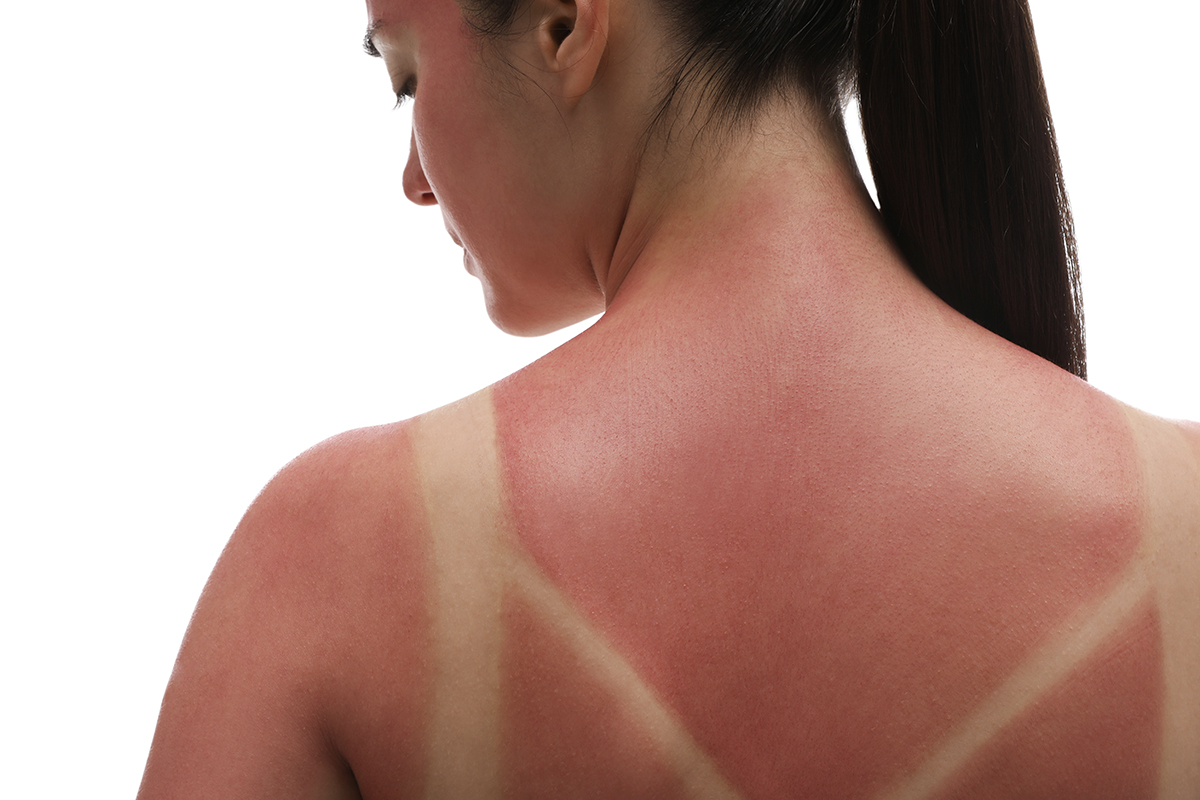What are sunburns?
Sunburn most often occurs as a result of intense exposure to the sun without adequate protection in the form of UV filter creams, protective clothing or hats. The skin reacts differently to UV rays depending on the skin type - people with fair skin are more prone to sunburn than those with darker skin. Symptoms of sunburn can appear just a few hours after sun exposure and worsen over the next 24-48 hours.
Slight sunburns only show redness and discomfort, while higher degree sunburns lead to blistering, swelling and sometimes fever and chills. In extreme cases, symptoms of sunstroke can occur, which require immediate medical intervention. It is important to know how to properly deal with sunburn and when medical attention is required.
First aid for sunburn
When you notice the first signs of a sunburn, act immediately to alleviate the symptoms and prevent further skin damage. Here are the steps you can take as part of sunburn first aid:
- Cooling the skin. The first step is to cool the skin, which helps to reduce pain and swelling. You can do this by applying cool wet compresses to the affected areas or taking a cool bath. However, avoid applying ice directly to the skin as this can cause additional damage.
- Hydrating the body. Sunburn can lead to dehydration, so it is important to drink plenty of water. Hydration helps the skin to regenerate and speeds up the healing process. Avoid drinks containing alcohol or caffeine as they can contribute to dehydration.
- Use of soothing lotions and creams. Apply a soothing lotion or cream with aloe vera or hydrocortisone to the burned skin. Aloe vera gels are particularly effective in relieving pain and inflammation. Avoid products containing alcohol, as these can further dry out the skin.
- Avoiding further exposure to the sun. After a sunburn, it is best to avoid further exposure to the sun. Wearing loose, airy clothing and using high UV sunscreen is essential to protect the damaged skin and prevent further damage.
- Monitor skin condition. Regularly monitor the condition of your skin at the burn site. If you notice blisters appearing on your skin, redness persists or pain increases, this may indicate a more serious injury that requires consultation with a doctor.
Management after sunburn
After suffering a sunburn, it is important to prevent further damage to the skin. The first step is to avoid exposure to the sun. Sunburned skin is particularly sensitive to UV rays and therefore needs more protection to allow it to heal effectively and quickly.
It is also important not to break off blisters that may appear on the skin after a sunburn. Blisters have a protective function, protecting the damaged skin from infection and further injury. Rupturing blisters leads to open wounds that are more susceptible to bacterial infections. If blisters rupture spontaneously, they should be gently cleaned and covered with a sterile dressing.
Another important aspect is moisturising the skin. Burned skin often becomes dry and flaky, causing additional discomfort and itching. Using mild, unscented moisturising lotions with aloe vera helps to keep the skin healthy and speeds up recovery. Avoid products containing alcohol, which dry out the skin and increase sensitivity.
Long-term effects of sunburn and prevention
Sunburn often has serious long-term effects on skin health. UV damage can lead to premature skin ageing, characterised by wrinkles, loss of elasticity and hyperpigmentation. To make matters worse, repeated sunburn significantly increases the risk of developing skin cancer, including melanoma, which is the most dangerous type of this cancer. Skin lesions such as moles and birthmarks that become asymmetrical, change colour or size can be a sign of cancer development and require immediate consultation with a dermatologist.
Proper prevention the only way to minimise the risk of long-term effects of sunburn. Daily use of sunscreen with broad spectrum protection (UVA and UVB) and a high SPF (at least 30) is fundamental. The cream should be applied to all exposed parts of the body at least 15-30 minutes before going out in the sun and again every two hours, and after swimming or sweating heavily. Protective clothing, such as wide-brimmed hats and sunglasses with UV filters, further protects the skin from the sun's harmful rays.
Avoiding the sun during peak hours, usually between 10am and 4pm, also helps to protect the skin. It is advisable to seek shade and use beach umbrellas when outdoors.

